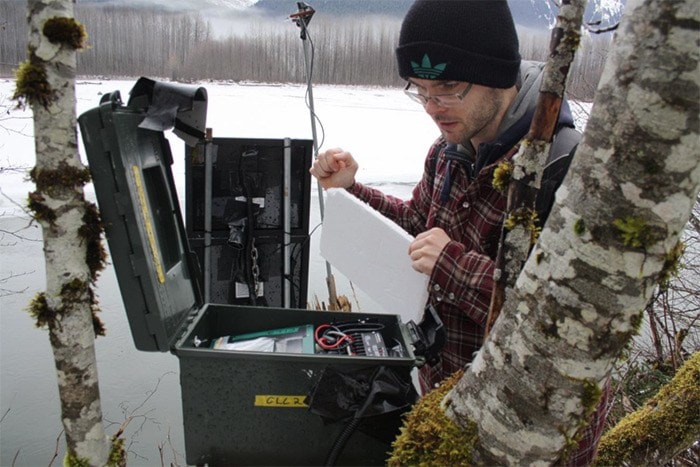Scientists are conducting a winter study of bats are looking for some help from the public which could help the flying mammals avoid dying from a parasitic fungal disease that’s killed millions in the last decade.
Cori Lausen, associate conservation scientist for the Wildlife Conservation Society of Canada, is tracking bat movements in the region in the winter, which is their hibernation time. That’s to provide data for how bats normally behave so scientists have this information in case White Nose Syndrome, a deadly parasitic fungus that grows on them during hibernation and changes their behaviour, comes here.
The study began in 2009 in the Kootenays and expanded around the province, she says.
The equipment monitors bat movements by recording the distinct ultra-sonic sounds that flying bats make as each species makes a distinct set of frequencies.
On bats studied down east, the fungus would raise the bats’ metabolic rates while they were hibernating so they start burning more fat than normal, and that’s a factor in their deaths, says Lausen. And they will arouse from hibernation every couple of days.
When the study first began, scientists had no idea what to expect and what their detecting equipment would record.
“The surprise to us was the diversity. A lot more species were flying around in the winter and there was a lot more activity as well,” says Lausen.
It’s not known why bats go out in the winter, says Lausen. It’s been hypothesized that they’re starving and go out looking for food but when these bats were caught, they were fat and certainly weren’t hungry, she says. And they seem to have their temperature limit for venturing out too.
“I’ve never reported [a bat out in winter] at lower than -8 C,” she says. “There’s something magic about that number.”
When it comes to hibernation, all small mammals will arouse from hibernation every couple of weeks – they don’t ‘wake up’ because hibernation isn’t a state of sleep, but is a state of dormancy where the animal has a low metabolic rate, she explains.
“It’s like bats have this extra need beyond what any small mammal does,” she says, referring to bats flying in winter.
We can anticipate that if there’s a severe reduction in bats, that will skyrocket the amount of nighttime insects, which they eat, says Lausen.
And bats can hibernate in a variety of places that aren’t expected.
“It’s amazing how many people have taken roofs off sheds that are not heated and find bats there in winter,” says Lausen.
A man in Vanderhoof felled an aspen tree and found bats underneath the bark, which was “bubbled,” she adds.
The man described the bat to Lausen and she had tracked other bats like it to the same type of roost elsewhere, she says.
About 50 per cent of bat hibernation locations have been discovered in the province and Lausen is asking people to contact her if they find or know of such a location so it can be added to the study.
People who know of local or regional hibernation spots for bats can contact Lausen at clausen@wcs.org.
